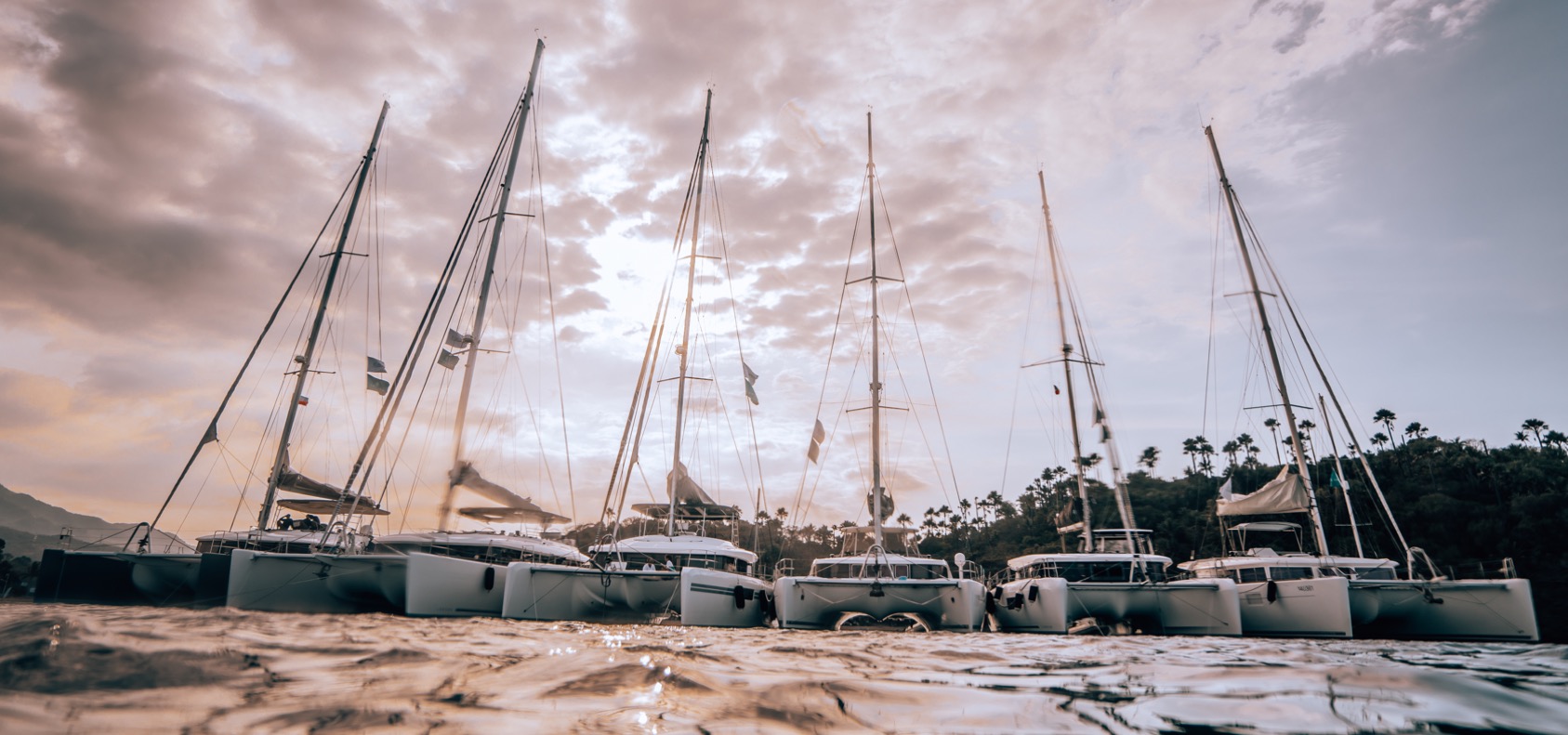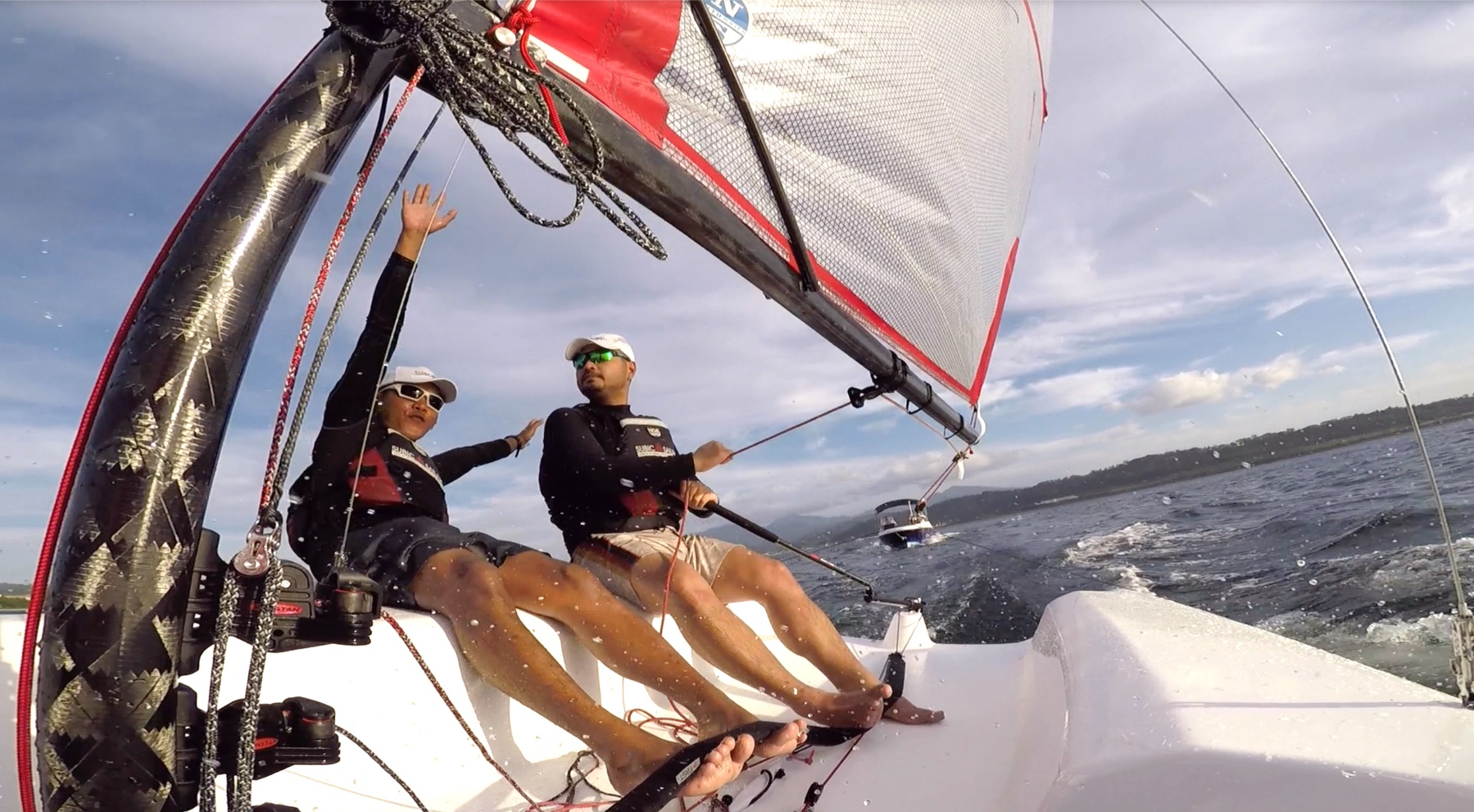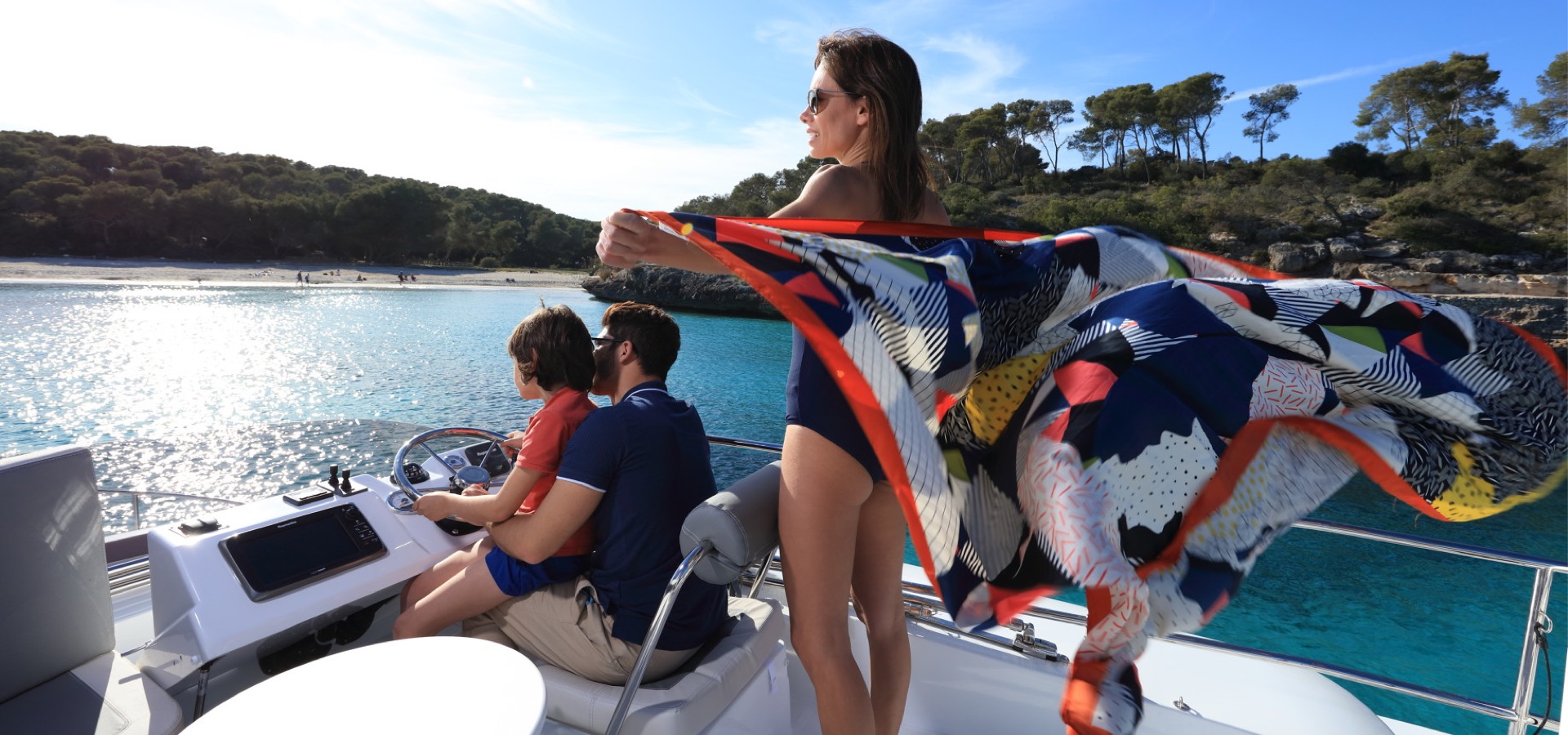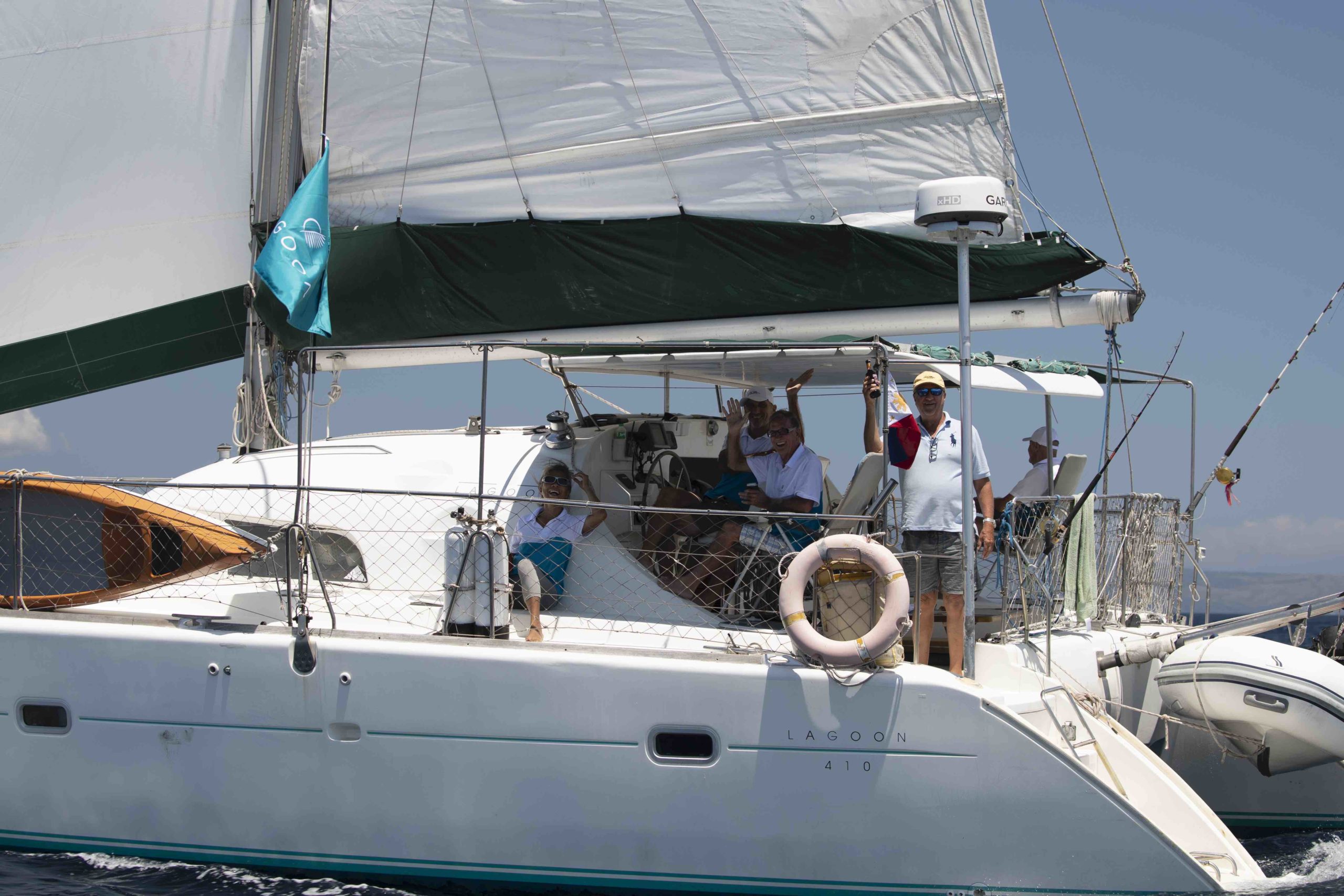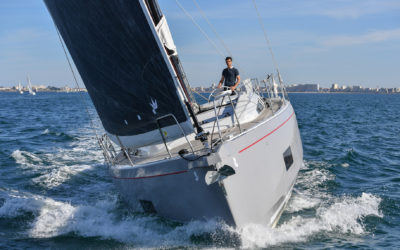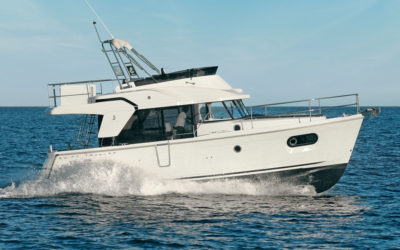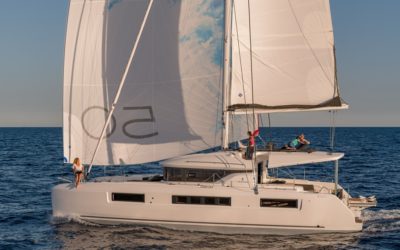All About Hulls: The Captain’s Guide to Boat Hull Types and Their Purposes
July 16, 2019
The design and engineering of a boat typically begins with its hull. This part of the vessel—essentially the main watertight body that sits on the water—factors immensely in the resulting buoyancy and stability of the watercraft. As such, the hull’s structural design is one of the most important considerations to make when building a boat or improving on an existing design.
In today’s feature, we’ll be discussing the importance of the hull and the people who are responsible for designing it. We’ll also discuss the different categories of boat hulls, cite their specific purposes, and as a bonus, we’ll throw in some interesting nuggets of nautical trivia along the way.
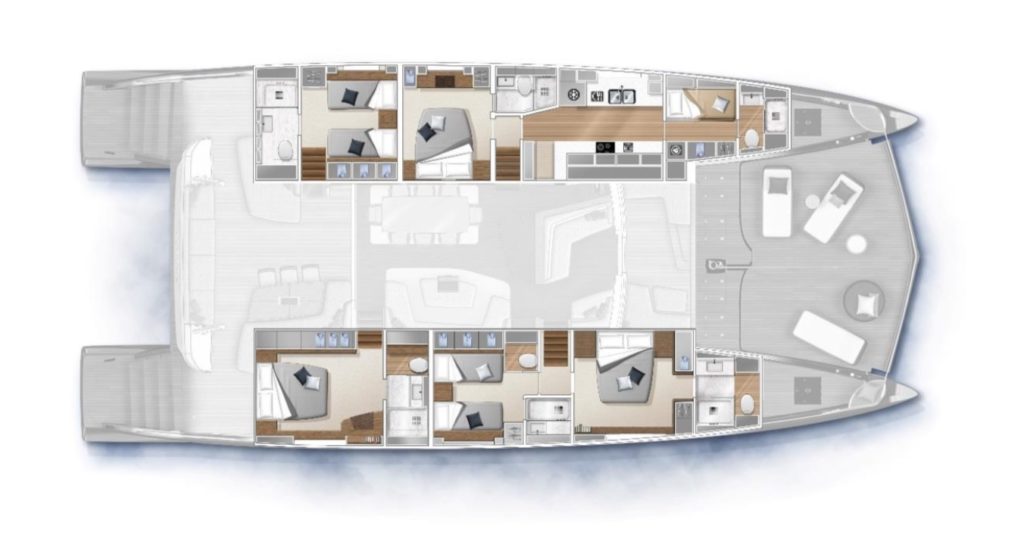
Designing the Hull: Achieving Perfect Balance, Stability, and Maneuverability
There is always a special team of people behind the boats we see out on the water, and each team typically comprises naval architects and marine engineers. While architects typically design the overall aesthetics, shape, and size of the vessel, engineers are responsible for putting together that systems that bring the mechanical and structural details of the boat to life. In fact there usually is an overlap between the skillsets necessary for naval architecture and marine engineering, and many individuals who work in the boat design industry will be proficient in both fields.
Now, one aspect of the boat design that naval architects and marine engineers will typically collaborate on is the design of boat’s hull. They work together to execute a design philosophy based on balance, stability, and maneuverability. With these characteristics in mind, the boat building team chooses the most appropriate materials with which to construct the hull, in addition to ensuring that its design is optimized for use on water. They must make sure that the hull will correctly serve the boat’s purpose, as well as render it safe, seaworthy, and pleasing to the eye.

Displacement Hulls, Planing Hulls, and Everything In Between
Beginners to the boating scene are usually introduced to two main categories of boat hulls: displacement hulls and planing hulls. The differences between these two types pertain to how they displace water, the speed at which they allow a boat to move, and how they accommodate the element of propulsion. The key words to remember about displacement hulls vs. planing hulls is that the former cuts through water, while the latter glides or planes on top of it.
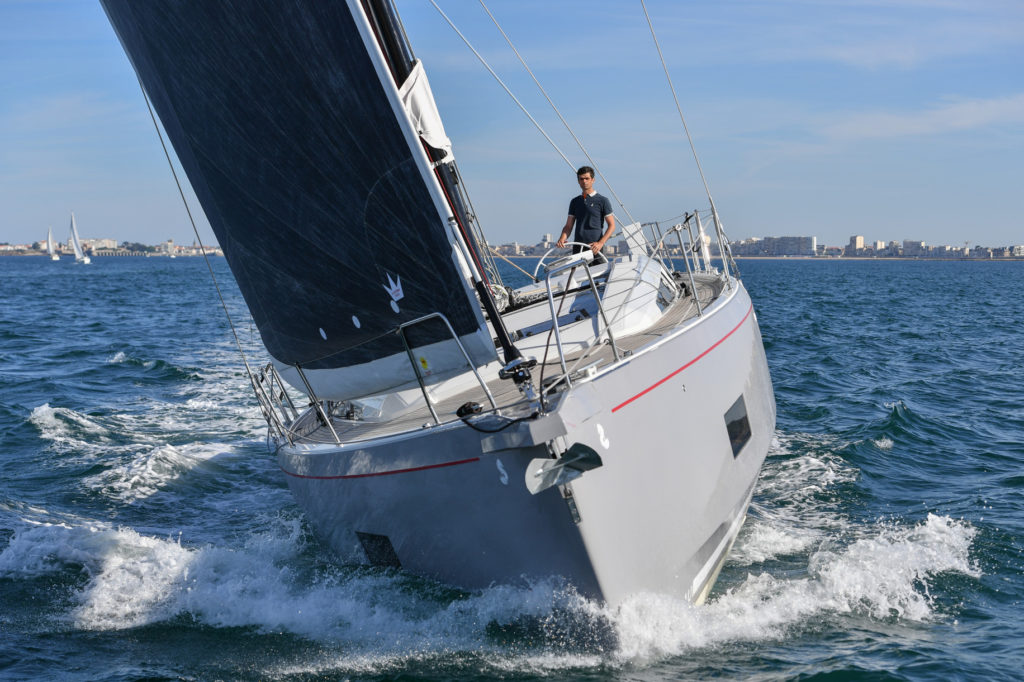
A boat with a displacement hull is designed to displace water by cutting through it and pushing it to the sides while the boat is moving. As such, you’ll notice that a boat with a displacement hull is typically more deeply lowered into the water than its planing counterparts. This type of hull can move through the water without much propulsion, but it typically sacrifices speed in return. This is why the construction of displacement hulls is usually employed for slower-moving boats that are less dependent on their motors. The displacement mechanism is prominently on display in many sailboats.
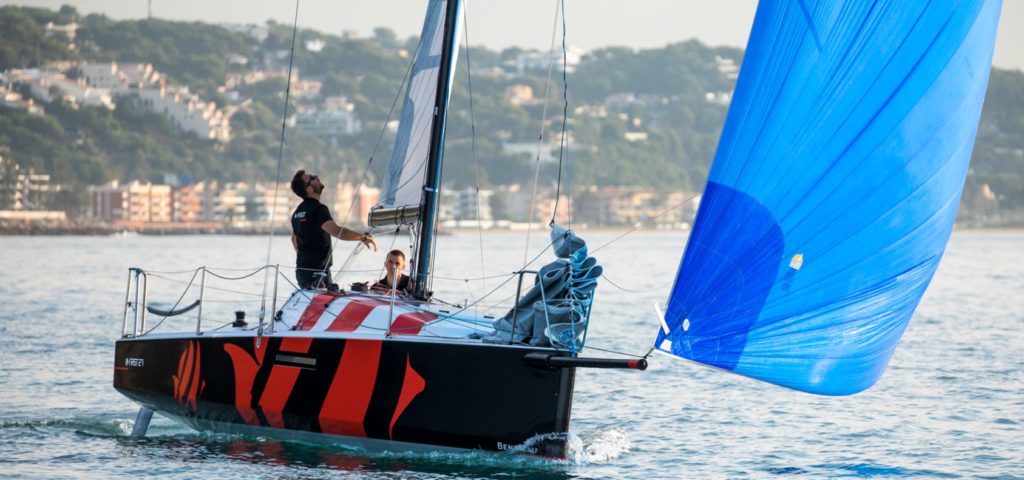
On the opposite end is the planing hull, a boat hull that is designed to glide swiftly on water when enough propulsion is employed. Top-end watercrafts with planing hulls can usually switch between different functions. For example, the vessel may run on displacement mode and cut through the water like a boat with a displacement hull if it runs slowly enough. The boat can then go on plowing mode, during which the fore of the vessel is significantly raised before achieving full speed on planing mode. In this final mode, the boat will be able to glide across the water powerfully. You’d be able to experience the true potential of planing hulls on boats that are tailor-made for speed, such as many of those in the Bénéteau’s Monte Carlo, Gran Turismo, and Flyer ranges.
But this is not to discount other boat types that sport hybrid hull qualities. Some motorboats possess a semi-displacement hull or a semi-planing hull, which may sport a similar shape to a regular displacement hull but will also be a bit flatter in the stern area. Many of the boats under Bénéteau’s Swift Trawler range can be described as possessing a semi-displacement or a semi-planing hull. These hybrid hull features marry the “best of both worlds,” so to speak, and are a testament to how quickly boating technology evolves.
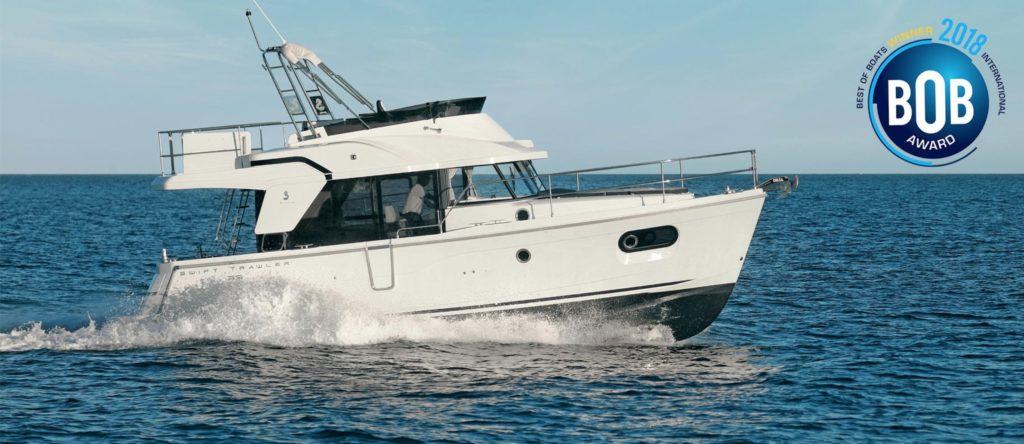
Classifying Boats According to their Hull Shape
Boat hull types can also be classified according to their actual shape or configuration and the functions that they fulfill. A vessel’s hull can determine how well-suited it is for a certain activity on water over another with a different hull type.
The Flat-Bottomed Hull
Hull Type: Planing
For an idea of what a flat-bottomed boat hull looks like, look to the most common types of boats today, which include simple rowboats, fishing boats, and dinghies. In other words, the flat-bottomed hull is one of the oldest hull designs contrived by humankind, and due to its inherent stability on water and shallow draft (i.e. the distance between the waterline and the bottom of the hull), it is a favored feature that saw our forebears through many of their basic transport and livelihood needs, particularly in smaller and shallower bodies of water. Since the flat-bottomed hull generally handles waves rather roughly, vessels with such a hull best fulfill their functions when the weather conditions are good and the water is calm and smooth.
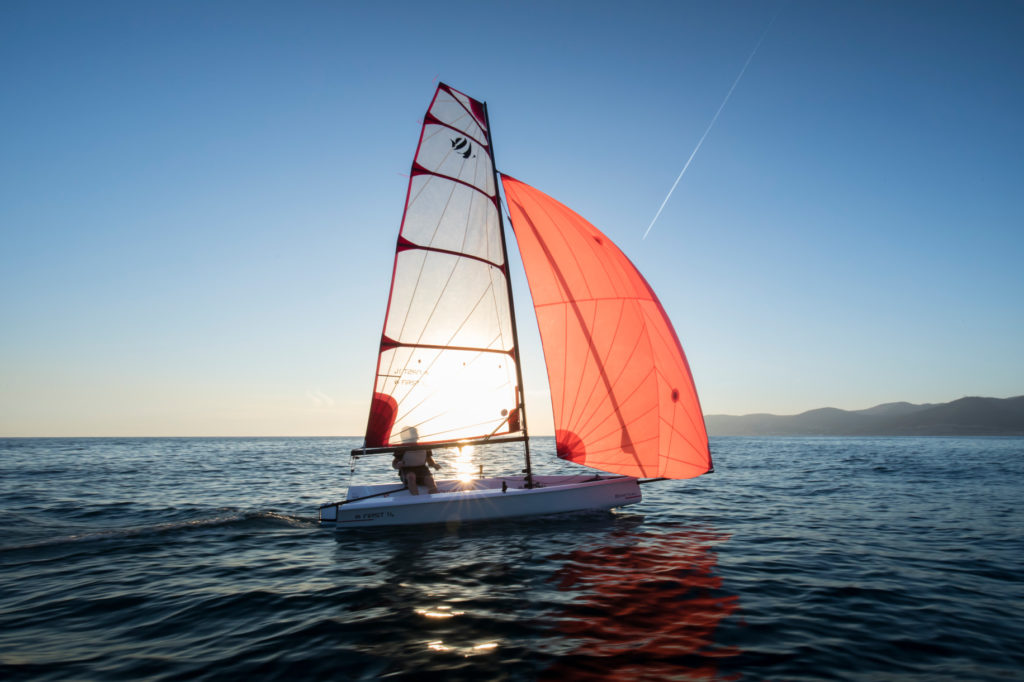
Trivia: A fine example of a boat with a flat-bottomed hull is the Bénéteau First 14 from the French boatbuilder’s celebrated First range. Designed by Sam Manuard and manufactured by Slovenian builder Seascape, the First 14 is an ultra-versatile dinghy that that is supremely adaptable to all levels of sailing ability. Whether you’re planning to sail solo or double-handed, this ergonomic boat is a delightful vessel that is sure to dial up the fun and pleasure to eleven.
The Round-Bottomed Hull
Hull Type: Displacement
The round-bottomed hull can be found on many vessels such as canoes, kayaks, tenders (or support boats), and some dinghies. The signature round shape matters a great deal to the boat’s performance, since this hull shape reduces the amount of drag on water and allows for the boat to move quickly through the water even at a lower speed. The downside to this hull shape is that it is more prone to keeling over, so to balance things out, boat makers usually add a heavy or deep keel to the vessel’s bottom.
Trivia: It may not have the same fan following as collegiate football or basketball, but rowing is actually the oldest contested collegiate sport in the United States. The first collegiate rowing competition took place in 1852, seeing a battle between bitter arch-rivals Harvard and Yale. The round-bottomed boat used in competitive rowing is called a racing shell.
The V Hull
Hull Type: Planing
This V hull is commonly employed in many motorboats or powerboats, which use the hull’s eponymous V-shape to be able to skim across the surface of the water when enough propulsion is supplied. The V hull is well-suited to navigating through rough water conditions.
Trivia: V hulls can vary when it comes to what is known as their deadrise angle, which refers to the wedge-shaped angle that forms between the bottom of the boat (or the hull’s surface) and a horizontal plane on either side of the keel. High-deadrise or deep-V hulls typically offer a smoother and more level riding experience when the boat is on planing mode, while low-deadrise or moderate-V hulls usually offer a more comfortable ride at slower speeds.
The Stepped Hull
Hull Type: Planing
The stepped hull—which takes its name from the longitudinal notches or “steps” that run across the boat’s hull from one side to the other—is considered a viable planing hull alternative to the V hull. The secret to the stepped hull’s effectiveness is the way it introduces air aft of the hull while the boat is running, a mechanism that reduces the wetted surface area of the boat and thus minimizes drag. This improves both the boat’s speed and fuel efficiency.
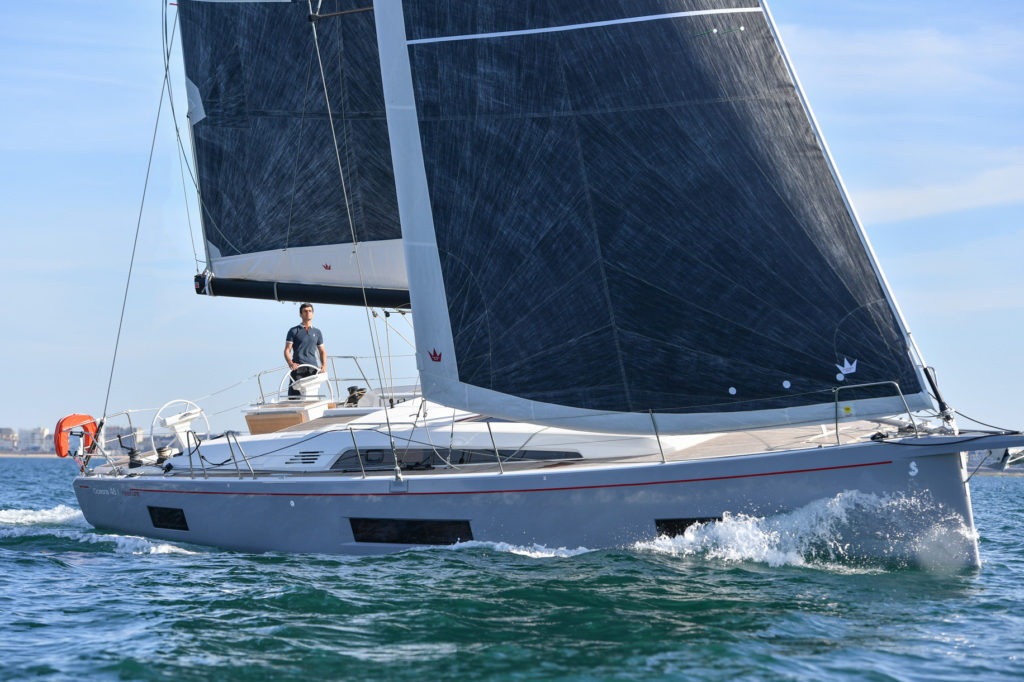
Trivia: French boatbuilder Bénéteau is renowned throughout the world for its groundbreaking naval innovations, one of which is the patented Air Step technology, a stepped hull innovation that was derived from the aeronautical industry. Air Step 2, the new iteration of the tech, improves the volume of air inflow beneath the hull to considerably increase the boat’s speed and reduce energy consumption while sailing. Bénéteau Oceanis sailboat models like the Oceanis 51.1 and the Oceanis 46.1 prominently use the Air Step technology.
The Multi-Hull
Hull Type: Displacement/Planing
Multi-hull boats are vessels built with more than one hull. Though some multi-hulls sport planing hulls, it is also common to see semi-displacement hulls on popular catamarans (double hulls) and trimarans (triple hulls). The broad profiles of multi-hulls typically afford the vessels enough stability as to forgo the need for deep and heavy ballasted keels, which are sometimes used in other boats for balancing purposes. Catamarans like those made by Lagoon are a popular choice among yachtsmen because they are exceptionally stable, roomy, and family-friendly.
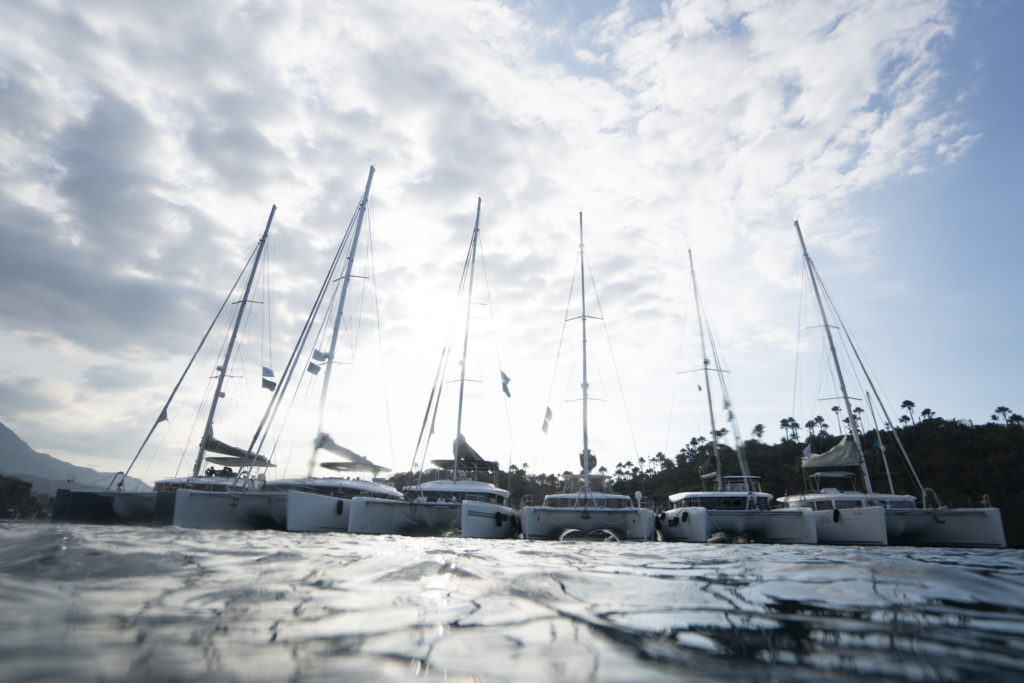
Trivia: In the Philippines, the ancestor to such high-tech watercrafts is the humble outrigger sailboat known as the paraw. There are many configurations of this boat type in Austronesian cultures, but what is common among them is their use of outrigger supports to stabilize each side of the boat.
The many advancements to hull technology prove that the art and science of boat making is by no means static. In fact, it has always been a process of constant reinvention. We at Europa Yachts are only too happy to walk new and aspiring yachtsmen through the ins and outs of boat hull designs, as well as the other features that contribute to exceptional journeys at sea. Call us now at (+632) 553-2027 or email us at info@europayachts.net to get started today.
